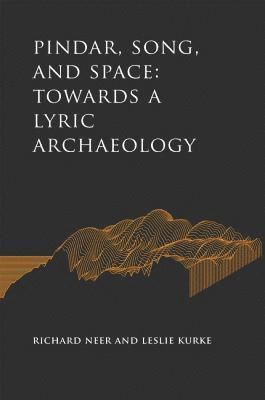
- Format
- Inbunden (Hardback)
- Språk
- Engelska
- Antal sidor
- 480
- Utgivningsdatum
- 2019-12-31
- Utmärkelser
- Winner of PROSE Award for Best Book in Classics 2020 (United States)
- Förlag
- Johns Hopkins University Press
- Illustratör/Fotograf
- color 31 Illustrations 74 Illustrations black and white
- Illustrationer
- 74 Illustrations, color; 31 Illustrations, black and white
- Dimensioner
- 234 x 168 x 30 mm
- Vikt
- Antal komponenter
- 1
- ISBN
- 9781421429786
- 1090 g
Pindar, Song, and Space
Towards a Lyric Archaeology
Kundrecensioner
Fler böcker av författarna
-
FM: The Rise and Fall of Rock Radio
Richard Neer
-
Conditions of Visibility
Richard Neer
-
Michelangelo's Sculpture
Leo Steinberg, Sheila Schwartz, Richard Neer
Övrig information
Richard Neer is the Barbara E. and Richard J. Franke Distinguished Service Professor in Art History, Cinema and Media Studies, and the College at the University of Chicago. He is the author of The Emergence of the Classical Style in Greek Sculpture. Leslie Kurke is the Gladys Rehard Wood Professor of Classics and Comparative Literature at the University of California, Berkeley. She is the author of The Traffic in Praise: Pindar and the Poetics of Social Economy.
Innehållsförteckning
Acknowledgments Note on Abbreviations, Texts, and Transliteration Introduction. The Propinquity of Things Part I. Orientations and Local Spaces Chapter 1. Two Spatial Technologies: The Map and the Chorus Chapter 2. Statues, Songs, and Spaces Chapter 3. The Strength of Equipment and the Radiance of Song: Collaborative Effects Chapter 4. Fr. 75 SM and the Politics of Athenian Space Part II. Pindar's Cyrene: Pythians 4, 5, and 9 Chapter 5. Cyrene, a Pindaric Schema Chapter 6. The City, the Body, and the Eye Part III. Pindar's Greece: Olympian 6 and the Spaces of Tyranny Chapter 7. Epigraphy, Architecture, Song: Olympian 6 and Other Gifts Chapter 8. Pindar's Transports Coda. Towards a Lyric Archaeology Appendix. Dating the Porch of the Geloan Treasury at Olympia Notes Bibliography Index Locorum General Index
Du kanske gillar
-
Napalm
Robert M Neer
Häftad -
Onyx Storm
Rebecca Yarros
Inbunden
